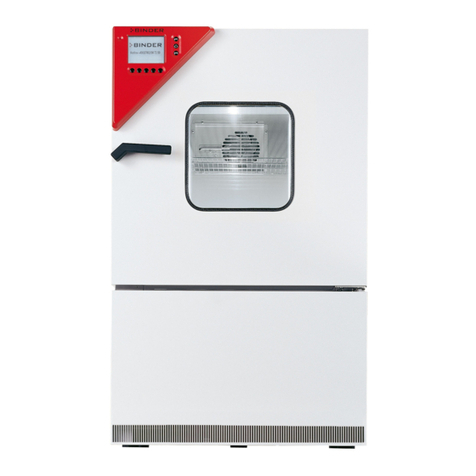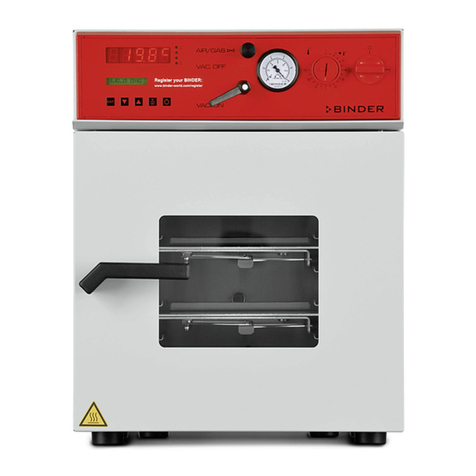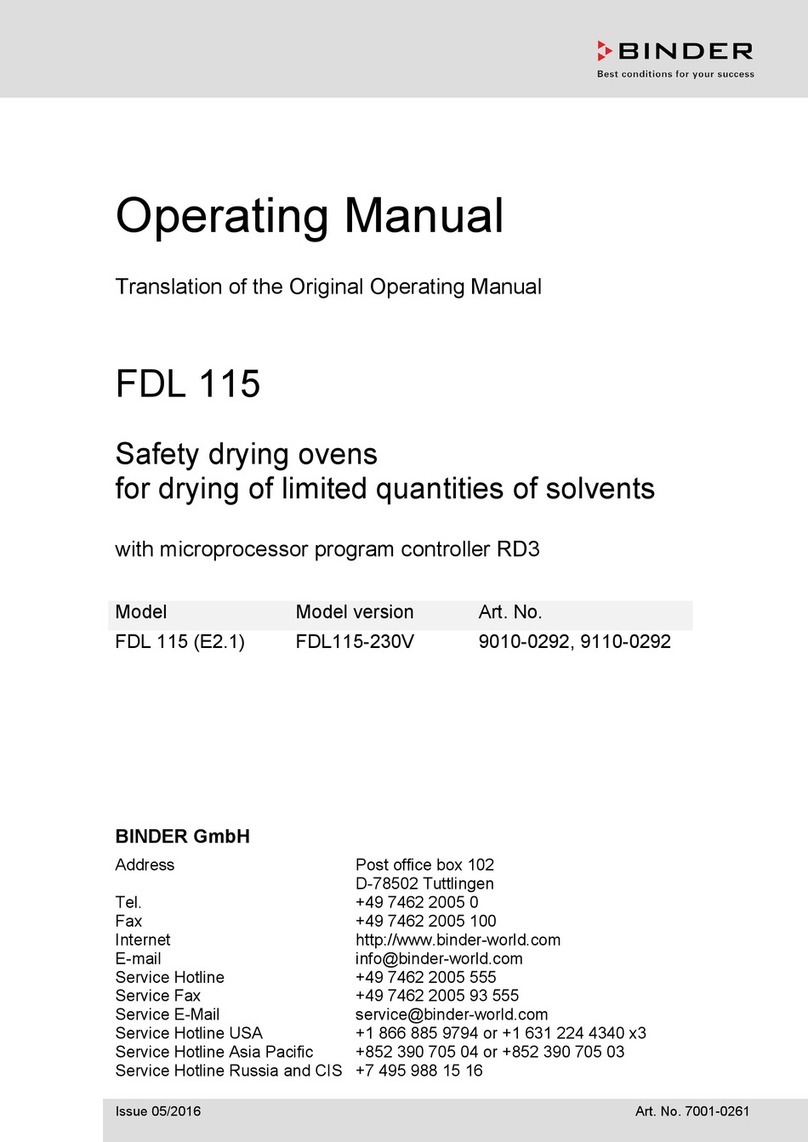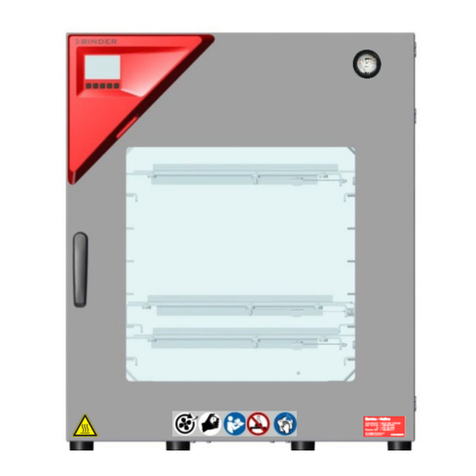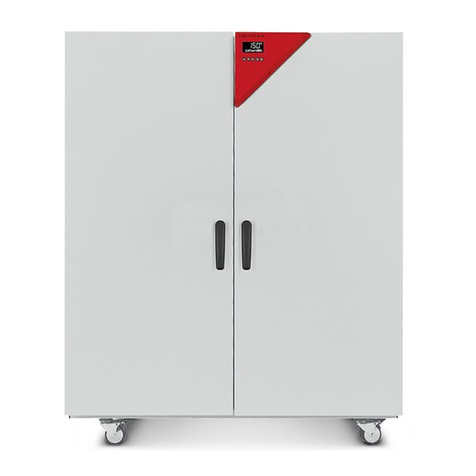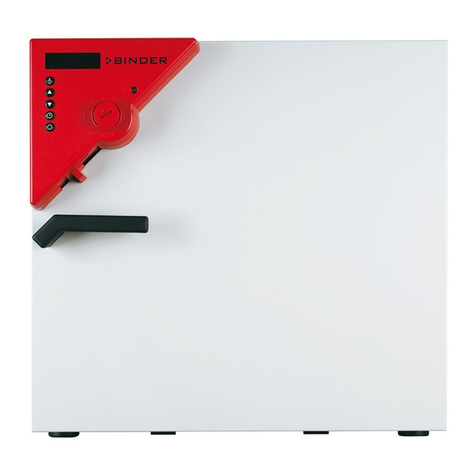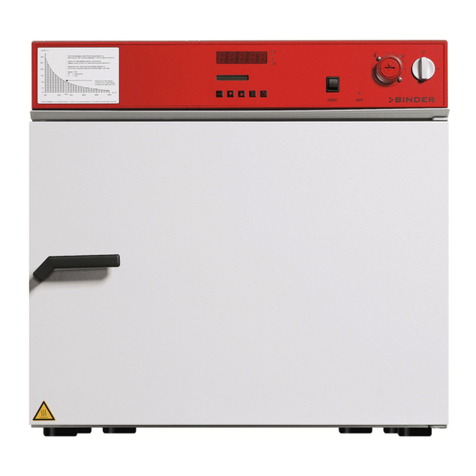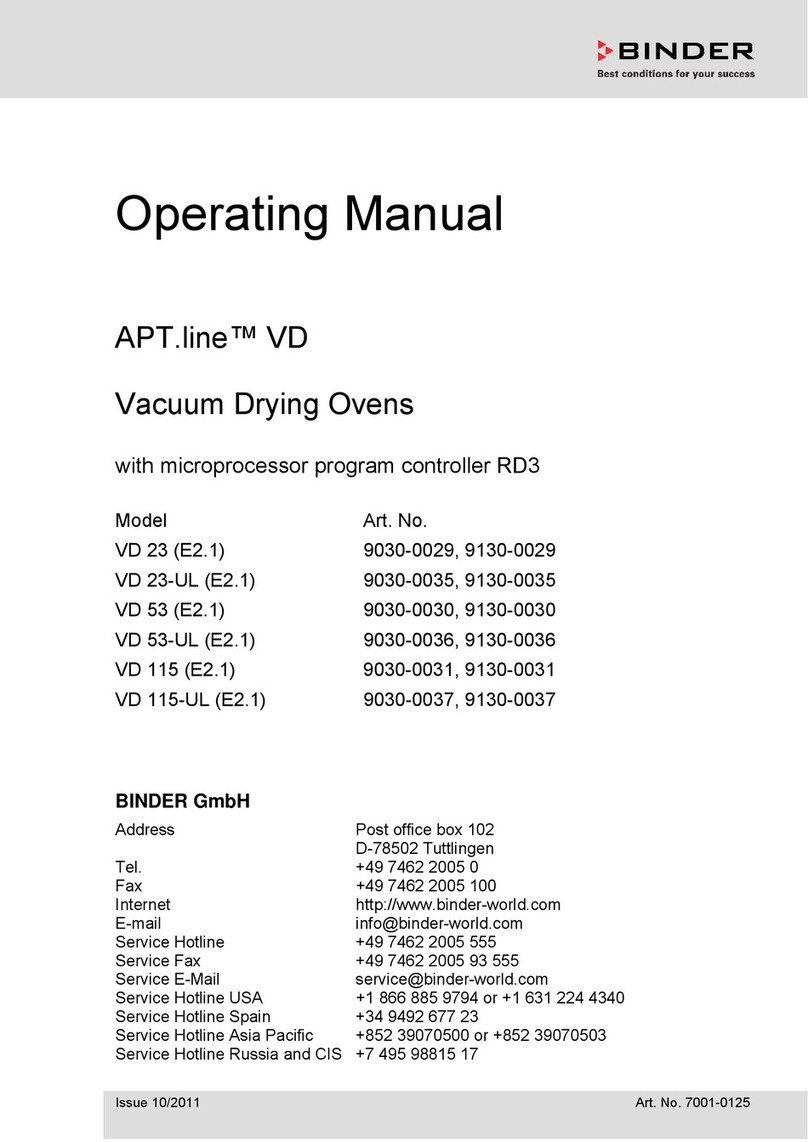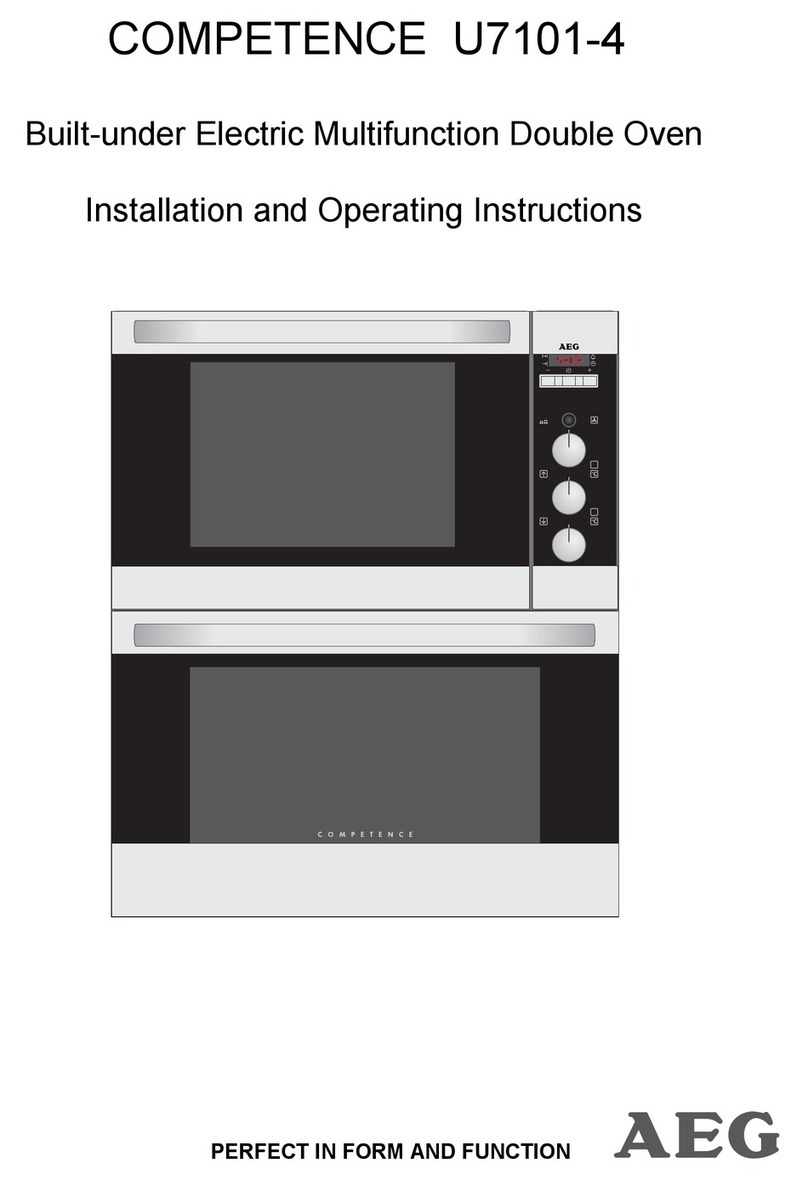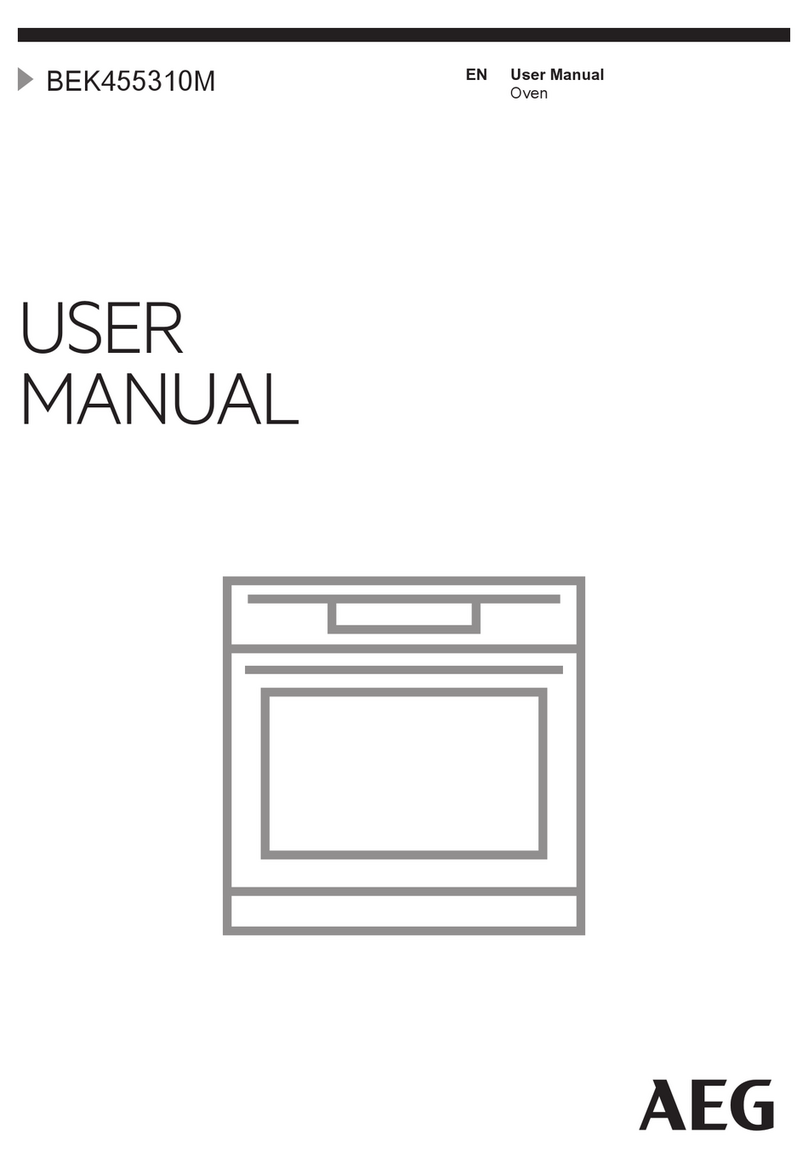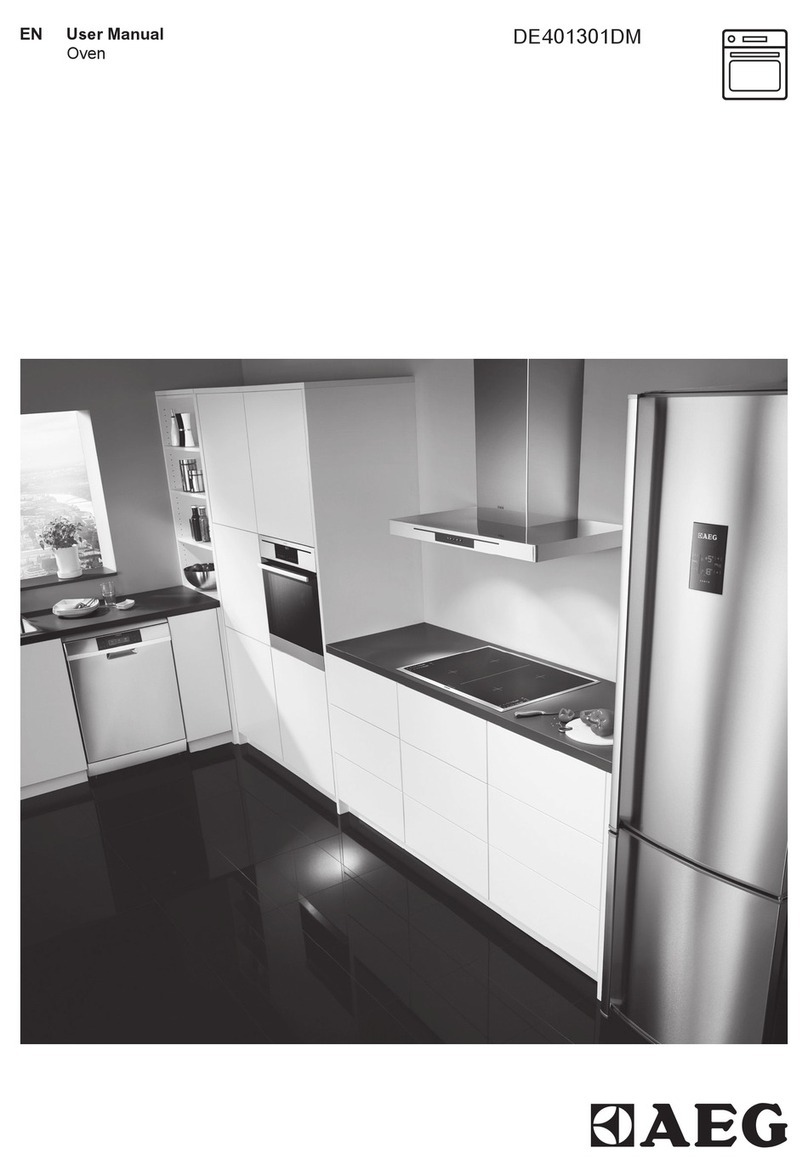
VDL (E3.1) 06/2020 Page 3/206
5. LOCATION OF INSTALLATION AND AMBIENT CONDITIONS.........................51
5.1 General requirements for installation................................................................................................51
5.2 Ventilation and extraction (technical ventilation)...............................................................................53
5.2.1 Ventilation for heat removal in normal operation....................................................................53
5.2.2 Technical ventilation during chamber operation and when emptying the condensate catchpot
of the pump........................................................................................................................53
5.2.3 Air supply (breaking the vacuum) during operation with inert gas..........................................54
5.3 Equipotential bonding........................................................................................................................54
5.4 Ambient conditions............................................................................................................................54
5.5 Compressed air / inert gas supply for sweeping the area for electrical equipment and controller
housing..............................................................................................................................................54
5.6 Fire extinguisher................................................................................................................................54
5.7 Lightning protection device ...............................................................................................................55
6. INSTALLATION AND CONNECTIONS ...............................................................55
6.1 Vacuum expansion racks and rack holders ......................................................................................55
6.2 Mounting the pressure regulator.......................................................................................................57
6.3 Connecting compressed air / inert gas supply for sweeping the area for electrical equipment and
controller housing..............................................................................................................................59
6.4 Pump module (option).......................................................................................................................60
6.4.1 Mounting .................................................................................................................................61
6.4.2 Achieving equipotential bonding acc. to the grounding plan ..................................................61
6.4.3 Connection of an extraction system at the pump module.......................................................62
6.5 Vacuum connection...........................................................................................................................62
6.5.1 Instructions for using vacuum pumps.....................................................................................63
6.5.2 Vacuum pump VP4 (option)....................................................................................................65
6.5.3 Installation of the vacuum pump VP4 in the pump module (option).......................................66
6.5.4 Note on the use of a flame arrester........................................................................................67
6.5.5 ATEX connection kit for vacuum pump VP4 (option) .............................................................68
6.6 Connecting inert gas supply..............................................................................................................68
6.7 Mounting the tilt protection holders...................................................................................................69
6.8 Achieving equipotential bonding / Grounding concept......................................................................70
6.9 Electrical connection.........................................................................................................................72
7. EXPLOSION SAFETY TESTS BEFORE COMMISSIONING...............................74
7.1 Scope of the functional test...............................................................................................................74
7.2 Explosion protection plan..................................................................................................................74
7.3 Objective of testing............................................................................................................................75
7.4 Testing before initial commissioning.................................................................................................75
7.4.1 Scope of the test.....................................................................................................................75
7.4.1.1 Testing the plausibility of the explosion protection plan and measures............................75
7.4.1.2 Verifying the implementation of measures ........................................................................75
7.4.1.3 Checking the deadlines for the recurring tests..................................................................76
7.4.1.4 Verifying the maintenance plan .........................................................................................76
7.4.2 Tests of technical ventilation systems, gas warning devices, inerting devices, devices,
protective systems or safety, control or regulating devices, and other technical devices for
explosion protection...........................................................................................................77
7.5 Inspection after changes requiring review ........................................................................................77
7.6 Recurring tests for the explosive safety of the system .....................................................................77
8. FUNCTIONAL OVERVIEW AND MENU STRUCTURE OF THE CONTROLLER78
8.1 Operating functions in normal display...............................................................................................79
8.2 Display views: Normal display, program display, chart-recorder display..........................................80
8.3 MB2 controller icons overview ..........................................................................................................81
8.4 MB2 controller operating modes.......................................................................................................83
8.4.1 MB2 controller menu structure................................................................................................83
8.4.2 Main menu..............................................................................................................................84
8.4.3 “Settings” submenu.................................................................................................................85
8.4.4 “Service” submenu..................................................................................................................85
